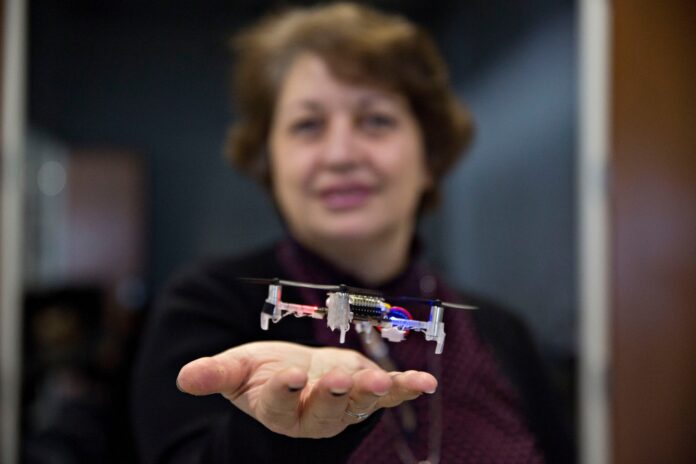The ranks of older and frail adults are growing rapidly in the developed world, raising alarms about how society is going to help them take care of themselves in their own homes. Naira Hovakimyan has an idea: drones.
The University of Illinois roboticist recently received a $1.5 million grant from the National Science Foundation to explore the idea of designing small autonomous drones to perform simple household chores, like retrieving a bottle of medicine from another room. Dr. Hovakimyan acknowledged that the idea might seem off-putting to many, but she believes that drones not only will be safe, but will become an everyday fixture in elder care within a decade or two.
“Loneliness is at epidemic levels among elders in the U.S. today,” said Juliet Holt Klinger, senior director of dementia care and programs at Brookdale Senior Living, one of the nation’s largest providers of assisted living and home care.
In her lab, Dr. Hovakimyan has begun experimenting with small and large drones. She believes that drones could ultimately be used to perform all manner of household chores, like reaching under a table to grab an object, cleaning chandeliers and weeding the lawn.
In a crowded four-room laboratory in South Seattle, the former Microsoft software designer and executive Tandy Trower is experimenting with a four-foot-tall rolling robot he calls Robby. With cameras, radar, microphone, speaker, a tablet interface and a movable tray, Robby may someday be able to serve as a mobile companion and even perform some light chores.
Mr. Trower said the robot, now a prototype in his Hoaloha Robotics laboratory, would be able to monitor the health of its human companion and assist with tasks like keeping track of medicines.
Catalia Health, a San Francisco-based design company, has introduced the Mabu personal health care companion, an interactive robot about the size of a coffeepot. The system, which has a cartoonish form, listens and speaks and holds a touch-tablet interface. It is designed to act both as a health care coach and to provide a way to stay in touch with doctor’s offices and pharmacies.
Source:
Markoff, J. (2015, December 4). As aging population grows, so do robotic health aides. The New York Times. https://www.nytimes.com/2015/12/08/science/as-aging-population-grows-so-do-robotic-health-aides.html.
Comment:
It is good to be exposed to different technology trends and current research. This article about drones is describing the possible future of drones and how they will impact and change the daily lives of older adults in a decade or two. It also points to root issues of why are they designing these in the first place. It brings up social isolation along with stating difficulties older adults have with household chores. The survey results also provided by our partners in Upper Arlington included research about ability to do indoor and outdoor chores. This has me thinking about what can be done or designed in the meantime, to help individuals with these chores, before drones and upcoming technologies become fine-tuned and easily accessible to the public.




